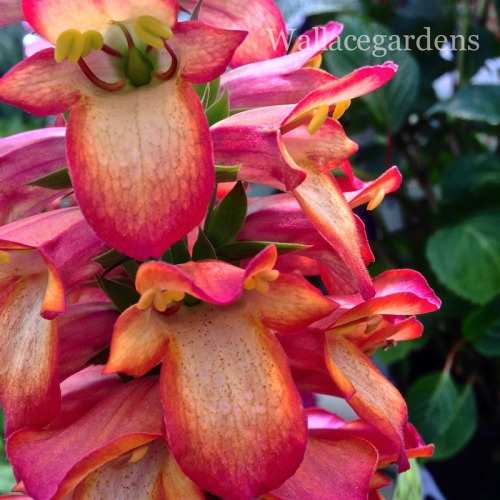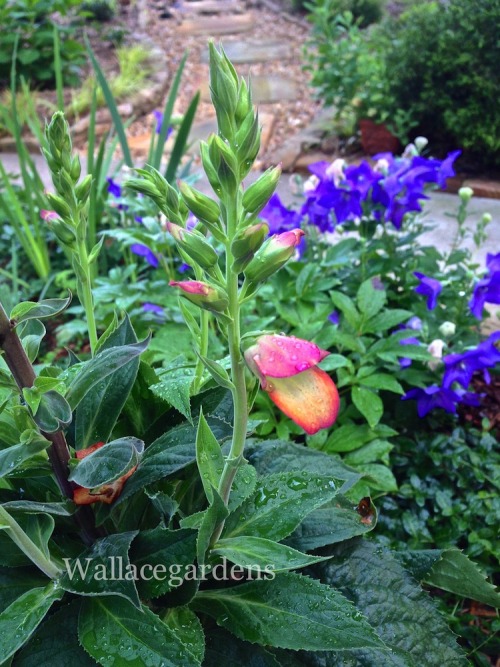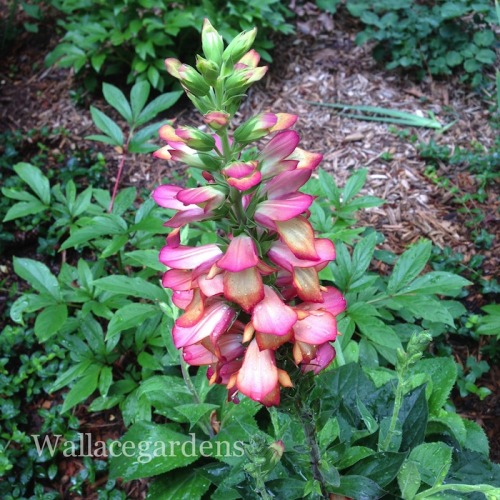#garden chat
Postcards from the Hedge.
A Foxglove with Lipstick?
Imagine the perfect non-stop summer bloomer with enormous impact all by itself, which is also deer proof. Meet Digiplexis ‘Illumination Flame,’ a cross between Digitalis purpurea (foxglove) and Isoplexis canariensis (Canary Island foxglove). This new hybrid blends the qualities of both plants, thanks to the efforts of Charles Valin, plant breeder at Thompson & Morgan. It received the Best New Plant Award at the Royal Horticultural Society Chelsea Flower Show (2012), as well as the Greenhouse Grower’s Award of Excellence in 2013.
Multiple side branches emanating from this bushy basal-branched shrub produce flame-colored flower stalks all summer long, even into the fall. Because the plants are sterile, they don’t waste energy trying to go to seed, and this results in fast-growing, floriferous shrubs with vibrant, vertical flower stalks to 3’ in height in shades of watermelon, fuchsia and mango. And while that may sound delicious, Digiplexis has the same toxins as its relative, Digitalis, so all parts of the plant are poisonous. If you use the plant in cut flower arrangements, dispose of the water safely because the toxins will seep from the stalks into the water. The foliage may also cause skin irritation, so handle it with caution.
Digiplexis can be used in seasonal color beds as a backdrop to other annuals, or grown in large containers. It will take part shade to full sun, and blooms from April until the first frost.
Post link
Become a Biodynamic Gardener, and grow your own. Learn about “the buddy system” and “companion plantings” as well as composting and crop rotation. Certain plants benefit by growing near other plants: tall crops can provide a canopy for shorter crops; leeks will repel carrot flies; include flowering herbs and perennials to attract beneficial insects.
Illustration: Genevieve Simms
Post link






